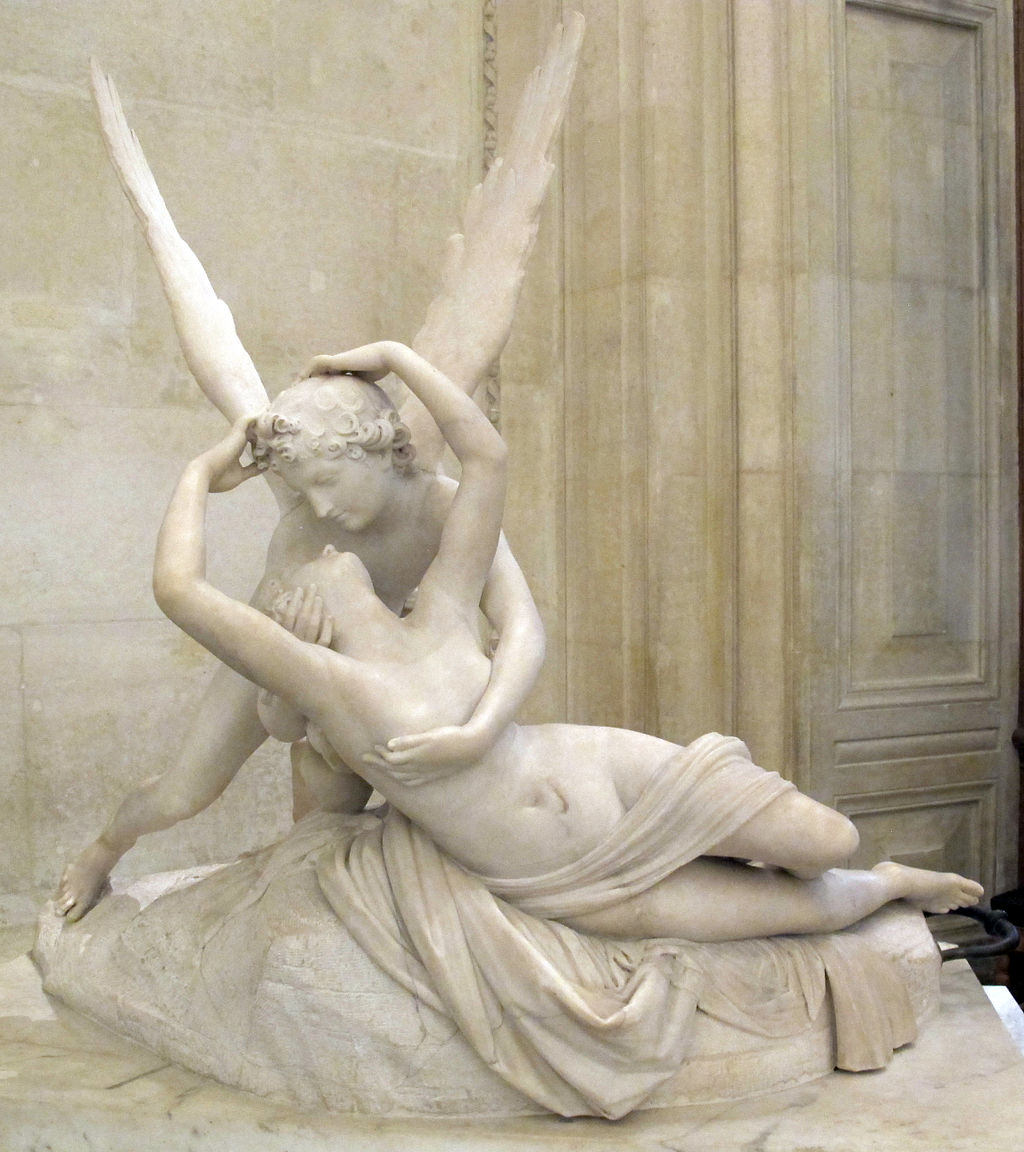
“Saint Bride” by John Duncan delicts the legend of Saint Bride. This painting blends the Hiberno-Saxon art of the “Book of Kells” and the more modern Celtic Revival and Symbolist art movements.
The ancient story of St Bride is that she was transported miraculously to Bethlehem to attend Christ’s nativity.
Ducan shows two angels carrying the saint in white robes across the sea in a seascape setting that reflects the artist’s fascination with the Outer Hebrides and the Isle of Iona.
The realistic depiction of birds, the seal, sea, and sky provide a naturalistic contrast to the supernatural angels overlapping the patterned border.
Scenes from Christ’s life are framed by Celtic motifs and decorate the angel’s robes. The motifs are reminiscent of the “Book of Kells” illuminations and reflect Brigid’s legend of having founded a school of art and illumination in Ireland.
The “Book of Kells” is an illuminated manuscript Gospel created in a monastery in either Britain or Ireland. It is a Western calligraphy masterwork and represents Hiberno-Saxon art’s pinnacle and is regarded as Ireland’s finest national treasure.
Brigid of Kildare
Saint Brigid of Kildare or Brigid of Ireland (c. 451 – 525) is one of Ireland’s patron saints. Irish tradition has her as an early Irish Christian nun and foundress of several nun’s monasteries, including Kildare in Ireland, famous and revered.
The saint shares her name with an important Celtic goddess, and there are many legends and folk customs associated with her.
Kilbride, “Church of Brigid,” is one of Ireland’s most widely found placenames. There are 43 Kilbrides located in Ireland.
Symbolism
Symbolism was a late nineteenth-century art movement seeking to represent absolute truths symbolically through metaphorical images as a reaction against naturalism and realism.
The symbolist painters used mythological and dream imagery. The symbols used by symbolism are not the familiar emblems of mainstream iconography but intensely personal, private, obscure, and ambiguous references.
More a philosophy than an actual art style, symbolism in painting influenced the contemporary Art Nouveau style.
Celtic Revival
The Celtic Revival includes various movements in the 19th and 20th centuries that saw a renewed interest in aspects of Celtic culture. Artists drew on the traditions of “Celtic art” or “Insular art” of Ireland and Britain’s Early Medieval style.
Most Insular art originates from the Irish monastic movement of Celtic Christianity, or metalwork for the secular elite, beginning around 600 with the combining of Celtic and Anglo-Saxon styles.
One major distinctive feature is interlace decoration, in particular, the interlace decoration. A widespread result of the revival was the reintroduction of the High cross as the Celtic cross.
John Duncan
John Duncan (1866-1945) was a Scottish painter who, at the age of 15, was submitting cartoons to the local magazine. He briefly worked in London as a commercial illustrator, then traveled to study at the Düsseldorf Art Academy.
In 1892 Duncan moved to Edinburgh and joined the Celtic Revival movement. In 1900 Duncan was appointed as a Professor at the Chicago Institute. When he returned to Scotland, he settled in Edinburgh, where he lived for the rest of his life.
Saint Bride
- Title: Saint Bride
- Artist: John Duncan
- Year: 1913
- Medium: Tempera on canvas
- Dimensions: 122.30 x 144.50 cm
- Museum: Scottish National Gallery
John Duncan
- Artist: John Duncan
- Born: 1866, Dundee, Scotland
- Died: 1945, Edinburgh, Scotland
- Nationality: Scottish
- Movement: Symbolism, Celtic Revival
- Notable works:
- Saint Bride
- Tristan and Isolde
John Duncan Artworks
A Virtual Tour of the Scottish National Gallery
- “Vision after the Sermon” by Paul Gauguin
- Haystacks by Claude Monet
- “Saint Bride” by John Duncan
- “Drinkers in the Bower” by Pieter de Hooch
- “Portrait of Lady Agnew of Lochnaw” by John Singer Sargent
- “The Finding of Moses” by Giovanni Battista Tiepolo
- “Three Tahitians” by Paul Gauguin
- “Diana and Callisto” by Titian
- “Montagne Sainte-Victoire” by Paul Cézanne
Explore Scotland’s Museums
Edinburgh Museums
- National Museum of Scotland
- Scottish National Gallery
Glasgow Museums
- Kelvingrove Art Gallery and Museum
The Mystical Paintings of John Duncan
John Duncan Scottish painter (1866 – 1945)
~~~
“May the hinges of our friendship never grow rusty.”
– Irish Proverb
~~~
Photo Credit: John Duncan (1866-1945) [Public domain]
Popular this Week








 Sponsor your Favorite Page
Sponsor your Favorite Page SEARCH Search for: Search Follow UsJoin – The JOM Membership Program
Sponsor a Masterpiece with YOUR NAME CHOICE for $5
Share this:
- Tweet
